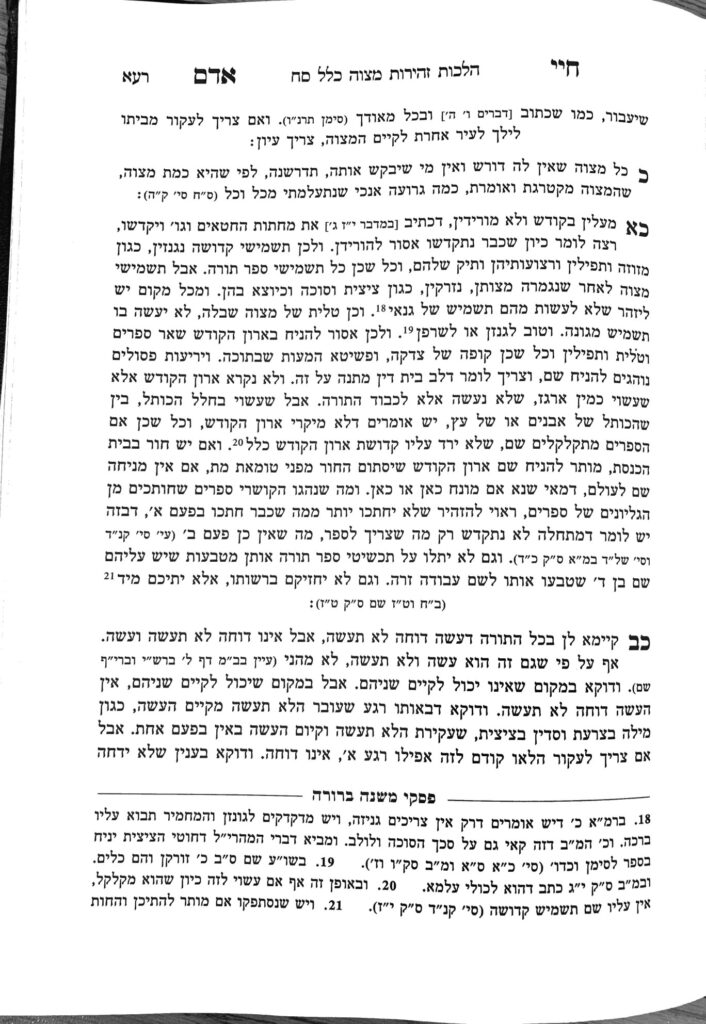We are continuing in siman 21, disucssing the concept of ma’alin bakodesh and selling items of kedusha. Today, we will discuss the concept of selling a shul.
We know that historically, shuls have been sold, sometimes even to churches, when the neighborhood changed or for other reasons. According to what we have learned, it is difficult to understand how a shul could be sold. Even if it was sold, we would have to assume the money was only used for purchasing a new shul. However, many times that was not the case. When a neighborhood died out, the shul was often sold and the money was put into an account for other purposes, such as purchasing cemetery plots.
There are two questions to discuss: how the sale works, and how can the money be used for something not equal or greater in kedusha. Even if we allow the sale, the Gemara in Megillah says that even when a shul is no longer functioning, the building cannot be used for anything denigrating or insulting to the kedusha of the shul. It is hard to imagine a more denigrating use for a shul than to sell it to a church.
In siman 153, the Shulchan Aruch discusses that a shul of a town could be sold via the shiva tuvei ha’eir, the seven parnasim of the city. This refers to a group which has been elected to represent the community for financial matters. The people of the city must be present, and, with these two conditions, the shul can be sold and the money used for whatever they wish. This process works in a similar manner to the Taz we mentioned yesterday, that when the need for the usage of the item has ended, we view it as though a tenai was made that the kedusha of the item will only last as long as it is needed for that purpose. Although we learned yesterday that in such a case, the money maintains its kedusha, the community-as represented by the shiva tuvei ha’ir-has the power to remove the kedusha from the money in a way that it retroactively only had kedusha until the point that it is no longer needed.
The extent of the power of the shiva tuvei ha’ir is a machlokes. There are machlokos regarding whether the shiva tovei ha’ir can sell other items, whether the kedusha is removed from the actual building or just from the money, and whether it must be sold for money or just remove the kedusha without a sale. These are all quesitons which must be discussed with a rav, should it be relevant.
Nonetheless, we do see that it is possible to sell a shul, should it be necessary. When a shul is being sold to a church, it is often first sold to an intermediary party, rather than directly to the church.
There is another exception regarding the issur to sell items of kedusha. It is muttar to sell any item of kedusha, including a Sefer Torah, for the purpose of supporting Torah learning, or to marry off yesomim. Regarding support of Torah learning, the Chayei Adam points out that for those who invest tremendous money into purchasing a Sefer Torah, if we are willing to sell a Sefer Torah for the purpose of learning Torah, how much more so should such individuals support Torah learning itself!
Summary
- A shul can be sold through the shiva tuvei ha’ir, in the presence of the community, should it be necessary. The money can be used for non-kedusha purposes, and the building loses all kedusha.
- Other exceptions to the issur to sell items of kedusha include selling the items for the purpose of Torah learning, or to marry off yesomim.



